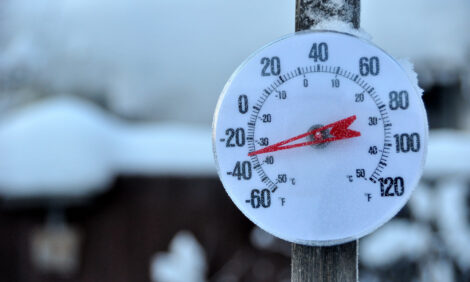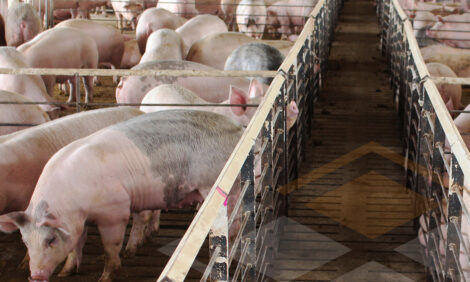



How to Exceed Production Targets
Dr. Jose Henrique Piva, Technical Services Director for PIC. Producers would like to believe their herd performance is always above average, but in reality, that may not be the case. This eight-point action list may help you get closer to exceeding production targets.Too often, we make assumptions based on gut feelings or daily impressions, when the actual numbers don’t coincide. Here is an eight-point action list that may help you get nearer to exceeding your production targets and the expectations of your managers and shareholders. This action list has been implemented on hundreds of U.S., Canadian, Australian and Brazilian farms since 1997. In many systems, these changes have had a direct, positive impact on sow “stay-ability,” lifetime reproduction performance and quality of piglets weaned. The result is greater annual throughput and improved employee satisfaction.
Intensively farmed pigs are totally under the control of people. The biggest factors affecting production targets are health, environment, nutrition, people issues and a productive sow inventory. With good health and a well-trained staff, pigs will be able to thrive and demonstrate their full genetic potential. Most farms or systems share the same issues, which include giving animals what they need at the right time. By including the eight important points below in your planning process, it is highly likely your herd performance will improve.
-
Staffing and Training
The right quality and quantity of staff is essential to sustaining farms with high productivity. Many producers understand you cannot improve or maintain the production numbers if your farms are running below a critical minimum number of well-trained and motivated people. In Brazil, where I was raised and where labor is a lot cheaper, producers can afford to have more people in the farms. However, here in the United States and Canada, labor is a bigger issue. For example, in a conventional 4,000-sow unit with the right pig flows, buildings and equipment, we would expect about 12 full-time workers. It is also important to assign the best people in the most important functions on the farms. We see that successful farms rarely use part-time workers for important activities such as heat detection, farrowing assistance, sow feeding, and so on. One of the keys to successful results is the training, motivation and management of staff personnel.
-
Training Programs
For systems to achieve, maintain or exceed current production performance, training is a continual process, not only for new people on the labor force but also for existing employees. For any size system to perform at or above expectations, a solid, ongoing training program together with Standard Operating Practices (SOPs) must be in place. Without this, you are forced to rely on current staff members to train new employees. You should ask yourself, “If my system is not performing to expectations, is this really the training program that I want?”
-
Gilt Management
In most cases, a gilt requires special attention from a young age through to the time she is bred to start her second parity. Judging when to breed a gilt for the first time involves much more than just looking at her age and backfat. Her weight, general state of wellbeing, structural soundness and the number of heats she has had recorded should also be considered. As THE KEY to successful gilt management, PIC strongly recommends that you breed a gilt only after she exceeds all three minimum criteria of 300 pounds, 30 weeks of age, and two-recorded heat periods.
-
Gilt Availability and Selection
Plan your system so you have an adequate flow of parent gilts coming forward. Successful systems have more than an adequate number of gilts in the pool every week to cover potential needs. This ensures that only gilts meeting the phenotypic standards you set will be bred at the stage of development you require. Failure to maintain an adequate flow and pool of gilts means your staff will breed marginal gilts or marginal sows to hit breeding targets, and this will negatively impact productivity for several years afterwards. To ensure an adequate flow of well-selected, sound gilts during all seasons of the year (including the high-demand summer months when some systems need 20-25% more gilts), many systems maintain at least 120 grandparent sows for every 1,000 commercial sows. There are a couple of other system-planning rules of thumb that can help: For every 100 P1 gilt litters you expect to farrow in a given month, your multiplication unit, ten months before, needs to have produced at least 170 weaned female piglets to supply that future need; and, you can expect and plan as acceptable that for every 100 selected gilts, 90 of them will farrow at least once.
-
Gilt and Sow Health
As a veterinarian, it is gratifying to see systems planning gilt flows to provide for a better acclimatization process. It is critical to develop the right level of immunity in gilts before they are bred. Gilts need to be acclimatized, without being excessively challenged, at an early age. This allows them to be thriving and in good condition at selection and breeding. Also, try to refrain from breeding gilts within two weeks of when they are moved to the farm, breeding project or stalls. This can increase the number of piglets born in the first parity by about 0.7 piglets per litter.
-
Sow parity profile
Many producers recognize that parity 6-plus sows usually have poorer born alive rates and are more prone to be culled or die than average parity sows. Consequently, there is a growing trend toward restricting P6 and above sows to no more than 5% of a farm’s sow inventory. Additionally, managers are looking at overall parity distribution instead of just average parity, because distribution is more important. A reasonable distribution of mated female inventory to aim for is 21% bred gilts (or parity zero females), 60% P1 – P4, and 19% P5 and beyond.
-
Sow Body Condition and Feeding
This is a particularly important factor, but it’s much too detailed to discuss at length in this article. Read PIC’s manual, “Fundamentals of Gilt and Sow Management,” which is full of practical details on body condition and feeding. You can also go to PIC’s Web site: http://www.pic.com/usa/ and, from the Resources section, download technical updates on a range of useful topics. Some other practical diagrams for use in farm offices, and which PIC produces in Spanish as well as English, include the “Gilt Selection Guide,” “Pointers for Successful Heat Detection,” and “Gestation Feeding and Body Condition Scoring in Sows.”
-
Individual Sow Care
It is too easy in large-scale pork production to overlook the individual animal. Yet, it is extremely important to oppose inhumane treatment of pigs at any stage of production, and to be intolerant of workers who willfully mistreat pigs. This policy is not only the right thing to do – it is also in our own best interests. When a sow gets sick, have the processes in place to first identify her sickness, and then treat her as effectively as possible. The National Pork Board’s “Swine Welfare Assurance Program SM” (http://www.porkboard.org/SWAPHome/) provides an assessment process that PIC now requires in all its farms and in the farms of the multipliers who produce breeding stock for us under contract. All these farms were assessed and benchmarked by PIC in 2004, and will be assessed again over the coming twelve months. Dr. Jer Geiger has led this program for PIC.
What differentiates the productivity of two different farms or two different production systems is directly related to the health, genetics, environment and nutrition associated with the combination of practical routine and attention to detail on a daily basis. Managing and training the work force, understanding the biology and stimulating the physiology of the pigs at the right time, and consistently providing good management for the pigs under our care, are all key factors to achieving high sow and farm performance.
November 2007





